What is Glucose?
Glucose is a sugar. You may have heard it called by another name: blood sugar.
Whenever someone says that their blood sugar is low, they are talking about glucose. The basis for this comment is that when our glucose falls outside the recommended or normal levels, its effect can be devastating and unhealthy and affect our normal day-to-day functions.
It is a simple carbohydrate with only one sugar and puts it in the company of fructose, galactose, and ribose. Carbohydrates are one of the body’s preferred sources of fuel, and glucose, in the right amounts, is going to give you the energy your body needs.
How is Glucose Processed?
To gain a better understanding of what glucose is, you should also know how it is processed.

When you eat something, your body immediately starts to process glucose, along with everything else. Your pancreas, along with essential enzymes, starts to break down the glucose, and the pancreas creates insulin to deal with the newly-ingested sugar.
Diabetes and Your Blood Sugar Levels
Diabetes is a chronic, long-lasting condition that happens when the pancreas is not creating enough insulin to deal with your body’s sugars. Medically, this situation requires insulin to be injected.
Glucose is fine in moderation; you just don’t want to overeat continuously, which can affect our health.
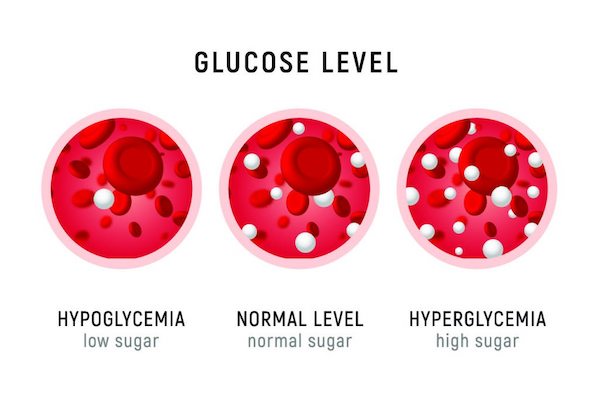
The Different Blood Sugar Levels and What They Mean
When it comes to blood sugar levels, we can use the Goldilocks analysis. Your blood sugar is either too low, too high, or just right. If your levels are not ‘just right,’ then it might be worth consulting a doctor, especially if the results are consistent.
There are three main blood sugar tests that should give you the basis for an accurate reading of your levels.
Before Meals/Fasting
You can take your blood sugar level right before you enjoy a meal or in the morning before eating (this is classed as an overnight fast). Your blood sugar level should be at its lowest during this time.
Your blood sugar level should be between 4.0 and 7.0 mmol/L. If it is higher, you may be hyperglycemic, and if it is lower, you may be hypoglycemic. If the numbers fall out of this range, consult your doctor for medically sound advice about returning the numbers to within normal levels.
After Meal.
Two hours after a meal is when your blood sugar will peak. When testing, your numbers should all between 5.0 and 10.0 mmol/L. If it becomes a consistent occurrence that your numbers fall outside of this range, consult your doctor.
Random Testing of your Blood Sugar
Along with testing for lows and highs, you can perform random blood sugar exams. Whether you test before a meal, during a meal, after a meal, or between meals, you should take note of the number and if it is higher than 11.0 mmol/L, then consult with your doctor.
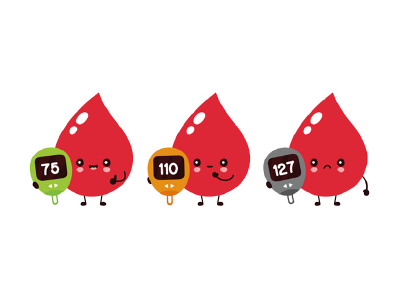
A1c Number
Along with these testing methods, you can also check your A1c number, usually under supervision by your doctor. This is a measure of the average percent of your blood that has had sugar attached to it over the past 2-3 months. The goal is 7% or less and, again, consult your doctor to understand more about this number, how to test, and what the results mean for you.
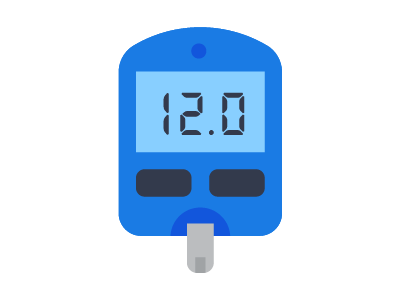
What is a Glucometer?
A glucometer, or a glucose meter, is a medical device that is used to determine the approximate level of glucose in the blood. They can be used by both medical professionals and regular people who want to measure glucose levels in the comfort of their own homes.
Most glucometers test a drop of your blood. They usually come with a lancet that used to prick your finger and extract blood. (Don’t worry, it is a minor inconvenience.) When you use the glucometer to test your blood, a series of chemical reactions take place between the sugar in your blood and the chemicals on the test strip.
This reaction, in turn, creates an electrical current that measures the amount of glucose in your blood. Finally, the device converts the current to a readable number, and you have your results in seconds.

Is a Diabetes Test Kit a Glucometer?
Yes, a diabetes test kit is basically a glucometer, or, at the very least, it will contain a glucometer. Seeing as you need to know your glucose levels when you are testing for diabetes, a glucose meter is an integral part of the kit, and it is essential for diabetes management.

Of course, that does not mean that there is not more to a diabetes test kit. Kits will vary from company to company, but all will come with the tools to diagnose and monitor diabetes symptoms.
We always recommend consulting a doctor, no matter what the readings, to get medically approved advice. One reading, and even many readings, may not give an accurate picture of the situation, and you may misdiagnose if you rely only on the kit. There is also an additional problem, which leads us to…
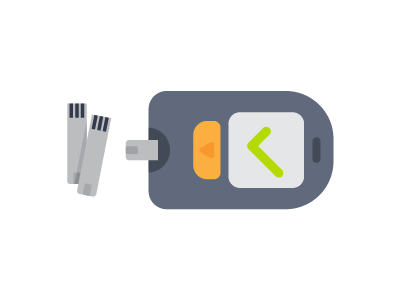
Are Glucose Meters Accurate?
Studies have shown that glucose meters are not always accurate.
The accuracy of the individual strips can be less than desirable, especially if they have been mishandled. This can mean that your numbers are not correct, and you have to take numerous tests before you can be sure of the results.
Of course, the results will vary from test to test, and some devices are more accurate than others. Others, however, are worth avoiding at all costs (scroll down to find some of our recommend glucose meters).
Usually, better quality test kits are accurate 95% of the time and within 15% of lab figures.
Tips for a More Accurate Glucometer Reading
- Users should always check the strip and not use damaged strips.
- Check the expiry date before use.
- Keep the strips away from heat, moisture, and humidity.
- Read the instructions before use.
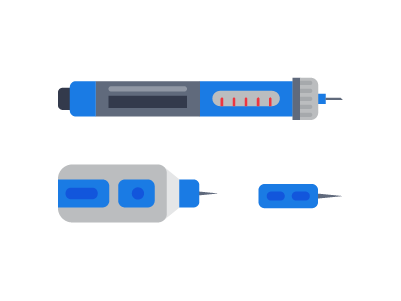
Who Should Buy a Glucose Meter?
There are several reasons that each home should have one:
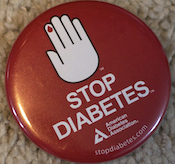
- The main reason to buy and use a glucose meter is if you have diabetes. If you do, you are going to want to monitor your levels regularly.
- If you think that you might have diabetes or are hyperglycemic/hypoglycemic, it can also help and be worth investing in a glucose meter.
- Even if you suspect that you are as well as you possibly can be, it is still beneficial to have a glucometer. In this way, you can catch any deviation from the normal levels early. It will also enable you to take action before your blood sugar levels become an advanced, serious problem.
Does Your Blood Sugar Need Continuous Glucose Monitoring?
If you have read through this and know that a glucose meter is something that you need, or you’re looking for one anyway, then read on to find the best glucometers for your needs.
Each of our 5 nominees for the best glucose meter is featured under a parameter: best overall, most accurate, the best bang for your buck, best paired with smartphones, and the most user-friendly.

Our Choices for the Best Glucose Meter
Best Overall
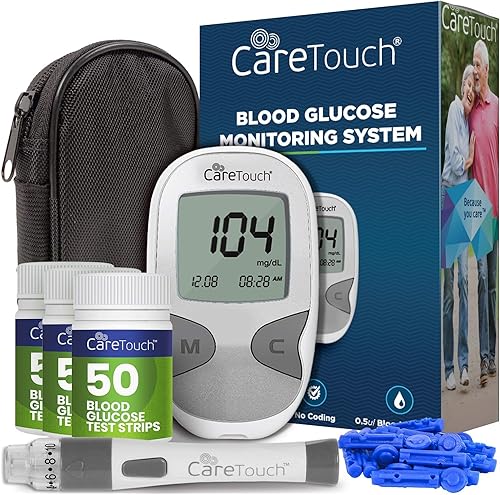
Care Touch Glucose Monitor
With a mix of affordability and functionality, this glucose meter tops our list for the best glucose meter and one of your best options for continual blood sugar monitoring.
The test kit is portable, with an included carry case, letting you take it wherever you go. When you do use the test kit, it is quick and easy. Once you have tested your sample, you will have the results back in just 5 seconds. The meter also recognizes batch codes to save you from having to program them.
With a large internal memory, the device can hold up to 300 readings. That allows you to store a 14-day average and look back at your results over time.
In the package, you have the monitor, plenty of test strips, a lancing device, 30-gauge twist lancets, battery, as well as a handy carry case. You also benefit from excellent customer care, and if your device is not working, defective, or if you have any problems with operation, they will be happy to help.
If you’re looking for a professional, easy-to-use, and portable glucose meter.

Most Accurate

Metene Blood Glucose Monitoring System
Each blood glucose monitoring system on our list is extremely accurate, but one had to take the top accolade, and this is the one. With laboratory testing, and almost 250 tested blood samples, this test kit exceeds the standard of accuracy needed, and that means that you are getting the best results to guide how your treat your blood sugar levels.
The glucometer has advanced German-engineered chips and the latest biosensors. When you use a test strip, you benefit from temperature-aware and verification test technology, which helps to avoid interference from blood oxygen variations. You can take advantage of these tests at all times of the day, pre-meal, post-meal, and any other time that you want to test. You can store up to 450 results, and this allows you to monitor continuously on 90-day averages.
We also like the adjustable lancing device, giving you different depth options, so you can go as deep as you need to get your sample, resulting in less pain, and great for those with sensitive or thin skin.
With numerous test strips, sterile lancets, a high-quality glucose meter, and a handy travel kit, this is an accurate glucose meter that is easy to use.
Currently Out of Stock

Best for Smartphones

Keto-Mojo Monitoring System
If you want the convenience of an integrated smartphone app, then there is no better glucose meter.
With Bluetooth capabilities, you can use this test kit to test both your blood sugar and ketone levels. This device is perfect if you are diabetic, want to monitor your blood sugar, or are on the keto diet. You can even combine both tests to gain valuable insight into what is going on inside your body. The free smartphone app lets you sync your readings to your phone and integrates with other health apps.
For those who are techno-phobic, don’t worry; the app includes auto coding and is extremely intuitive. It has a large memory capacity, enough to hold 1,000 test results, and there are individually wrapped strips to maintain sterility and integrity.
This is a great test kit if you’re looking for more than just blood sugar level testing.

Most User-Friendly

Countour Diabetes Testing Kit
If you are new to the game and want something that is easy to use, then this starter kit has everything that you would ever need. With lots of accessories and an intuitive system, you won’t have to worry about user manuals and online tutorials.
In the kit, you have the main device, 100 test strips, 100 lancets, a lancing device, control solution, manual, logbook, and a handy carry case. The device is so easy to use that you won’t even need to consult the manual, though we always recommend that you do.
The results are extremely accurate, and you will have them in 5 seconds. There is also second chance sampling, a handy addition when you are still getting used to a new system. There is no coding, daily alarm reminders for those who appreciate the reminder, saved pre- and post-meal glucose level tests, and 7, 14, and 30-day averages.
This is an excellent meter that is easier to use than most.
Popular Articles on ComproGear
Rose Toy How Does The Rose Toy Works? Rose Toy Explained in Full.
Best Compression Socks for Sitting All Day Should You Wear Compression Socks if You Sit All Day? Best Compression Socks for Sitting All Day, Including Pressure Levels, Sizes, and Buying Options.
Best Compression Socks for Ankle Swelling Swollen Ankle Socks are the Best Compression Socks for Ankle Swelling. But You Need to Purchase the Correct Size and Pressure Level.
Nurse Compression Socks Stocking Nurse Compression Socks for Nursing and Standing for 12-Hour Shifts.
Wide Calf Compression Socks Wide Leg Compression Socks 3XL, 4XL, 5XL, and 6XL Just Launched!
Compression Socks For Swollen Feet Socks for Swelling Feet Guide To Instant Edema Relief
Will Compression Socks Help Swollen Feet? Compression Socks For Ankle Swelling Explained. 10-20 mmHg vs 20-30 mmHg Pressure Level, Sizing Chart, and Materials Guide.
What Are The Best Socks For Circulation? Are Tight Socks Bad for Circulation? We Show The Difference Between Regular Socks and Specially Designed Compression Hosiery.
What Level of Compression Socks Do I Need? Compression Socks Rating Guide
Compression Socks for Obese Legs – Super Plus Size Compression Stockings Now Available in Sizes Up to 6XL!
Compression Stockings mmHg Chart: Compression Stocking Types and Strengths

Buying Guide
What to Look for When Purchasing the Best of the Best Glucose Meter
Purchasing a glucose meter is easy, but choosing the best one out there, or the one that best fits your needs, is a tougher prospect. So, before you go out there and buy one, take some time to consider the following.
The Cost
You will have to pay a one-off fee when you buy your glucose meter, but they are generally priced about the same. The key is to research the cost of the accessories.
You will be buying replacement strips and lancets multiple times throughout and should consider this additional expense to your budget. Check how many are included with the device, how much replacements cost, and if it’s easily available at your local Walgreens. Sometimes, you will find that the originally pricier devices can be less expensive in the long run.
Insurance
If you are suffering from health issues, and need to check your blood sugar levels to help treat this issue, then it is worth looking into your health insurance. If you can claim part or all of the cost, then you can spend your money on something more enjoyable too.
Coding
You may have noticed that all of the devices on our list come with automatic coding. This means that you do not have to calibrate the device, download any codes, or work with an app. The problem with coding is that it can give you inaccurate results if you enter any information incorrectly.
We recommend automatic coding to save you from any hassles.
Storage
While this is not essential, if you want to track your levels over a period of time without having to write anything down, then you are going to want some internal storage in the device. Most devices will give at least 14 days, while others can give up to 90.
If you need to track your levels, then having storage space that will keep your data is a must.
Time
You don’t want to keep wasting your time just waiting for your test results. If you are testing multiple times a day, then this soon adds up. Most testing kits will give you your results in less than five seconds, and we don’t recommend settling for anything less.
Size
While most units are compact, you are going to want to go small if this device is going to be used on the go. And, while considering the device, consider the accessories too. Do the lancets and strips come in a large container? If the device uses batteries, what size are the batteries, and how many? Check out the kit and imagine how it will pack up for travel. And, if it comes with a case, that makes things a lot easier.
Sample Size
Modern testing kits use smaller blood samples with more accuracy. If you are sensitive to lancing, then look for a test kit that has variable lancing depths and uses the smallest sample sizes—the smaller the sample size, the shallower the lancet, and the less pain involved.
Most modern kits, however, have improved to the point that the pain is as painless as they can get.
How Many Times Can Lancets Be Used?
Most, if not all, manufacturers will recommend that you change your lancet after every use, and there is a good reason for that: profits.
From talking to experienced glucometer users, it is clear that you can get a few uses out of a lancet, and some even go for a week or two before changing. The only downside is that the lancets can become duller, but that is not a big deal for a simple finger prick.
Other factors will determine whether it needs changing, but remember to go with what you are comfortable with. Be sure to buy a device with lots of lancets if you plan to change them regularly, though. Also, check the cost of replacement lancets as these things can add up.
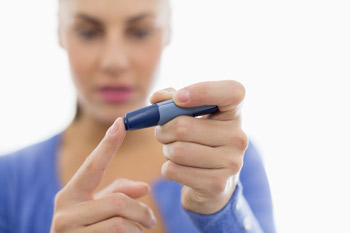
Which Finger is Best to Check for Blood Sugar Levels?
The World Health Organization recommends that users opt for the ring or middle finger when testing. Don’t use your pinkie fingers as they the thinnest skin and will result in more pain. When you prick your finger with the lancet, you might have to squeeze your finger to release a droplet of blood so that you can complete the test.
Does Squeezing a Finger Change Blood Sugar Readings?
While you may have to squeeze a finger gently to release some blood, we discourage squeezing too hard. If you do, you can dilute your sample with plasma (tissue fluid), and you will not get an accurate reading.
If you find that you are having to squeeze your finger every time you are taking a blood sample, then it is time to adjust the lancet depth or invest in a test kit that has a variable lancet. It is better to prick deeper to get an accurate sample to read.
How Often Do You Need to Test Blood Sugar?
The amount of testing will depend on the reason for testing. If you do not have any underlying conditions, then you might only want to test once a day. However, if you have diabetes, you might have to test 4-10 times a day. You can take this as a rough guide, and we recommend that you consult your doctor to schedule your testing.
If you do have diabetes, it is pretty normal to test before each meal, after any physical activity, and before bed.
There are reasons to test more frequently. If you are sick or not feeling yourself, notice big fluctuations in your blood sugar levels, are becoming more active, or are advised medically by your doctor, then you may have to test more.
Tips and Tricks for Users of a Glucose Meter
Always be prepared. Before using your blood test kit, ensure that you have everything that you need. Check your test strip and lancet level, and order for provisions ahead of time (you never know when a package will be delayed), and change the lancet if it needs to be changed. Also, remember to check the batteries. There is nothing worse than using the lancet and then having your sample go to waste.
When testing your blood, you should always remember to wash your hands before your test. You want to remove any contamination from your fingers that could alter the result of the test.
Don’t forget your cleanup. Use a cotton ball if needed, and dispose of the test strip once you have your result. If you are done with the lancet, be sure to dispose of it in a sharps bin.
Use a control solution to calibrate the device if you think that the readings are not correct. Perhaps you have been out for a long hike, and your sugar levels are showing as being high. Use the solution and make sure that the result falls within the desired range. If it falls out of the range, then call your meter company if the device cannot be recalibrated manually.
Pro-tip for users who are outside their homes:
Use a second drop. Imagine yourself out hiking in the great outdoors and having to test your blood sugar levels, and realizing that you are out of alcohol swabs to properly clean your finger. So, what do you do? You can use a second blood drop. Simply prick your finger and then wipe away the drop of blood. Let a second drop appear, giving a gentle squeeze if needed, and use that to test your sugar levels. That gives you the best chance of using a sample that is not contaminated.

This page last updated July 11, 2022
